Basic Insect Anatomy
Insects have three sections- a head, a thorax, and an abdomen. Each of those sections have a unique function and will have certain parts connected to them. For instance the legs are connected to the thorax. When drawing an insect, whether a real one or an imaginary one, draw the right parts connected to the right sections. See the list below.
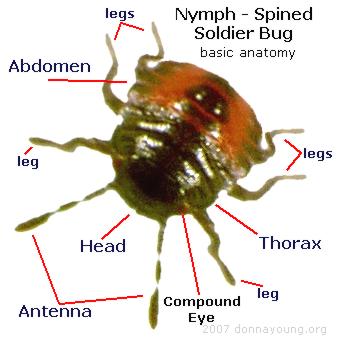
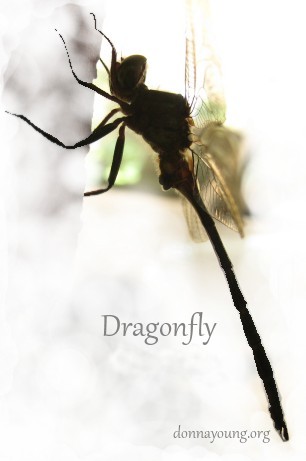
The typical functions of the three main parts of the insect:
- Head - sensory organs, brain, mouth parts
- Thorax: muscles for legs and wings
- Abdomen: the systems - digestion, respiration, excretion, and reproduction.
Drawing an Insect
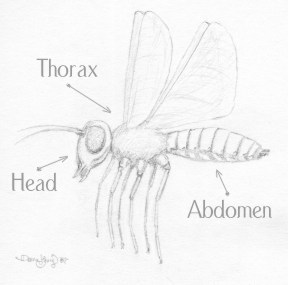
A bug drawing will contain the three basic parts.
Draw eyes, antenna, and mouthparts on the head.
Draw six legs on the thorax and, if applicable, wings.
The abdomen is sometimes just an oval without discernible details,
however; when drawing an insect from life, you might observe one or more
of these abdomen features: a stinger, spiracles (the holes for the
breathing tubes), segments, a hook on the end, stripes, etc.
Donna Young 5/20/2007
Sections- Head, Thorax, and Abdomen
Indistinct Sections
Side of a Spined Soldier Bug
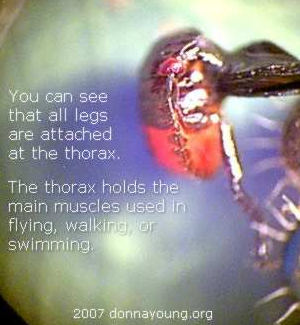
Image taken through microscope.
See also: Spined Soldier Bug
Distinct Sections
Bumblebee on Mint Blossom
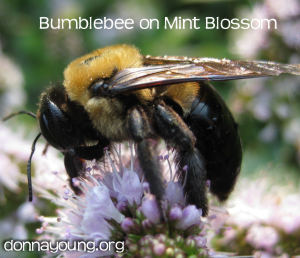
A photograph of a bumblebee from the side. You can see that the wings and legs are attached to the thorax.
I took the photograph in my garden, 2008.


 Animals of the World Booklet
Animals of the World Booklet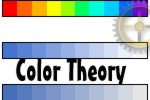 Learning About Color
Learning About Color What does Beta Mean regarding the V Planners?
What does Beta Mean regarding the V Planners?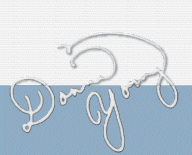
 1st Bug Movie
1st Bug Movie

